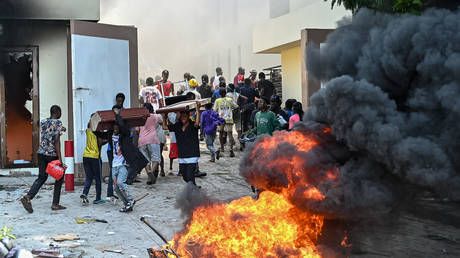An Israeli M109 155mm self-propelled howitzer fires near the Israel-Gaza border.
Jack Guez/Getty Images
In a worst-case scenario, crude oil could climb as high as $157 per barrel, the World Bank said.
If crude rises, other commodities such as industrial metals and food would also gain.
For now, the World Bank expects crude to average $90 for the current quarter, and keep falling into 2024 as demand declines.
If the Israel-Hamas war morphs into a much wider regional conflict, oil prices could reach $140-$157 per barrel, the World Bank cautioned in a special report.
That’s the worst of three scenarios presented by the lender, with the high end of its estimate representing a 76% jump from current crude prices.
“This scenario is comparable to the initial disruption associated with the Arab oil embargo in 1973, which resulted in a loss of nearly 7.5% of the global oil supply at that time,” the World Bank wrote on Monday.
Under that outcome, oil inventories would fall by an estimated 6 million-8 million barrels a day.
But even in a small-disruption scenario, a reduction of 500,000 to 2 million barrels a day would be enough to push crude prices up to a $93-$102 range.
Meanwhile, in a medium level of disruption could drive prices up between $109-$121, based on inventories dropping by 3 million-5 million barrels a day.
“While a risk scenario involving a small decline in oil supply may lead to only a modest increase in oil prices, risk scenarios featuring more widespread disruptions could result in substantial dislocations in oil markets, with initially sharp increases in prices,” the organization wrote.
For now, the World Bank expects crude prices to average $90 for the current quarter, and keep falling into 2024 as demand for oil declines.
But in the case that crude swings up, other global commodities would take a toll, it added.
For instance, food prices would surge as production and transportation costs would rise, while rising fertilizer prices would add pressure.
Upside risk would also come for industrial metals such as aluminum and zinc, given their energy-intensive production. Gold would also rise, though this would be on account of its reputation as a safe-haven asset. Already, the commodity has risen 8% since the conflict erupted.






+ There are no comments
Add yours